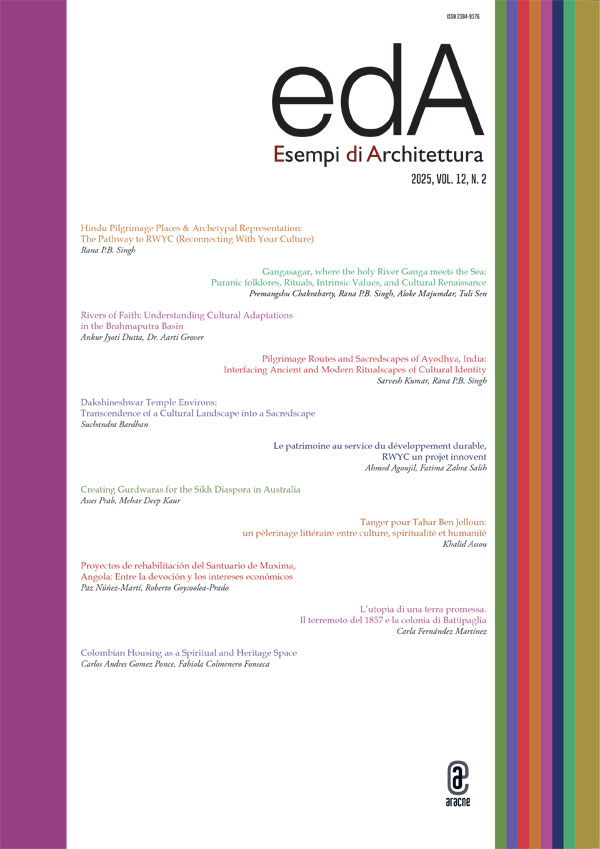Estratto dal volume Esempi di Architettura
Rivers of Faith: Understanding Cultural Adaptations in the Brahmaputra Basin
DOI: 10.53136/97912218172183
Pagine: 215-224
Data di pubblicazione: Febbraio 2025
Editore: Aracne
SSD:
ICAR/14 ICAR/18 ICAR/20 ICAR/21
The Brahmaputra River has emerged as an interface for ecological and spiritual interaction over the century that crosses Bangladesh, India, and Tibet. The Brahmaputra River, commonly referred to as the §§§§Son of Brahma,§§§§ is a sacred water body that is strongly implanted in the indigenous religious traditions of the regions it crosses. The river entering India and Bangladesh, passes through several sacred sites and pilgrimage routes across the Tibetan Plateau, attracting many academics and devotees and are often considered as centers for various cultural and religious activities. The impact of this river transcends beyond its religious symbolism, as it has influenced several local traditions, rituals and architectural styles of the communities that surround it. The Tawang Monastery in Arunachal Pradesh, which is significant to Tibetan Buddhists, and the Hindu-honored Kamakhya Temple in Assam are two of the many locations in the intricate connection of spiritual legacy along the powerful river. Based on their close association with the land, the communities dwelling around the river have also established their distinctive cultural traditions. These communities have been able to adapt and survive in these areas that are characterized by seasonal floods and rich alluvial plains because of these activities, ranging from religious rites to agricultural methods. The paper will investigate the relationship between religious pilgrimages, traditional customs along its course and the river’s influence on regional ecosystems and landscapes. The paper will also explore the significance of sacred places and pilgrimage routes in the Brahmaputra River valley and their impact on local identities and spiritual practices.


